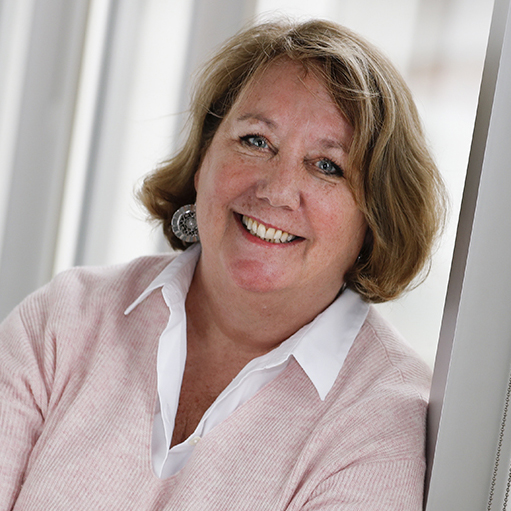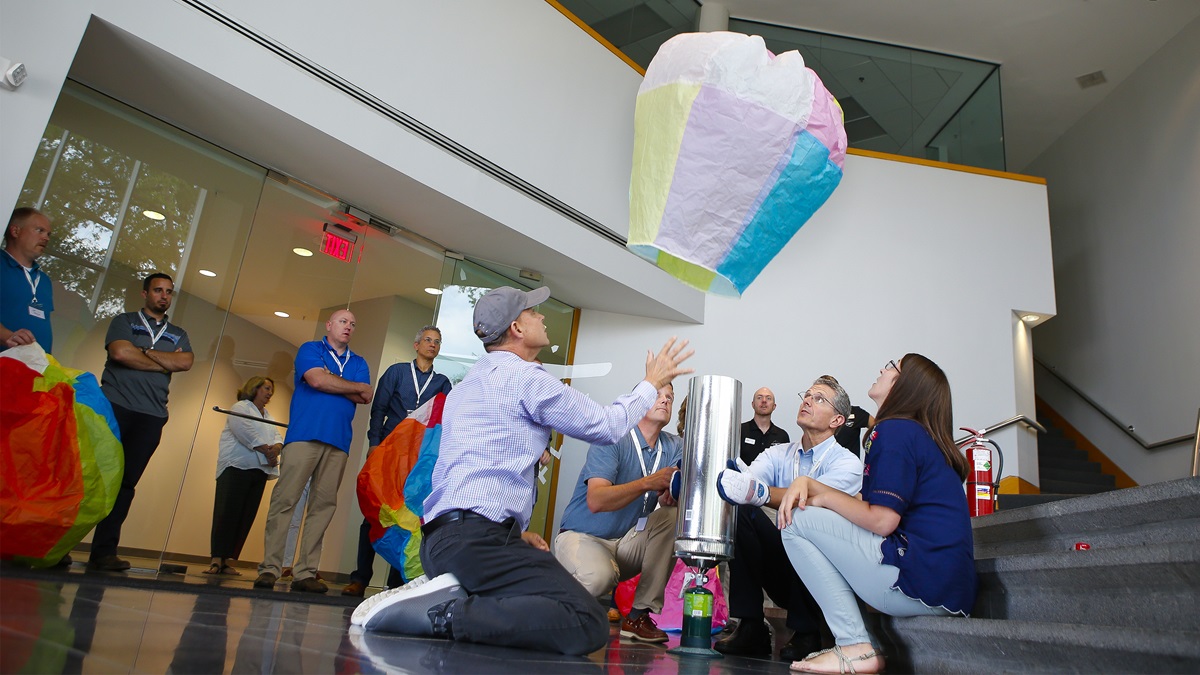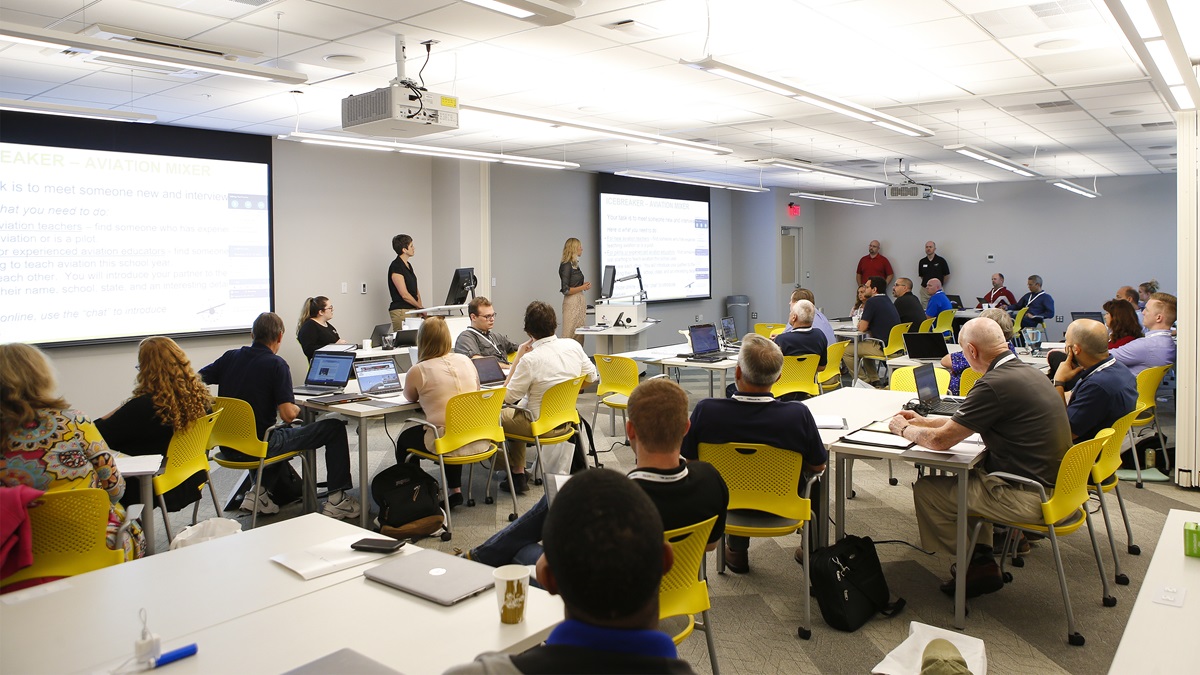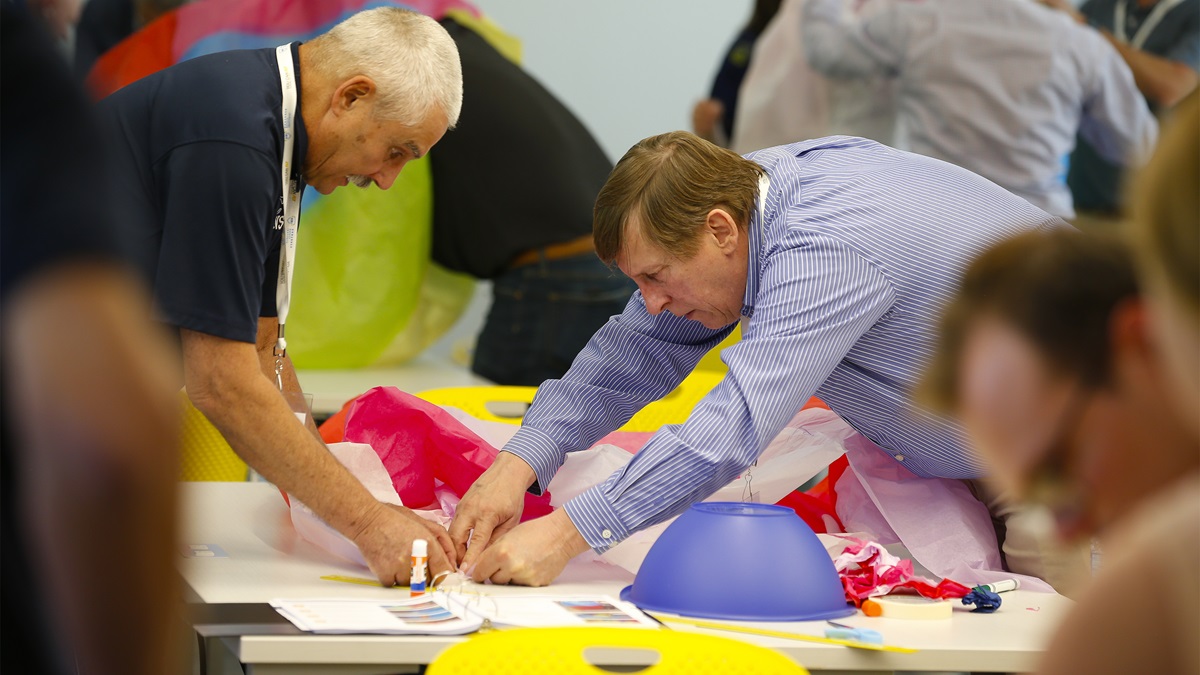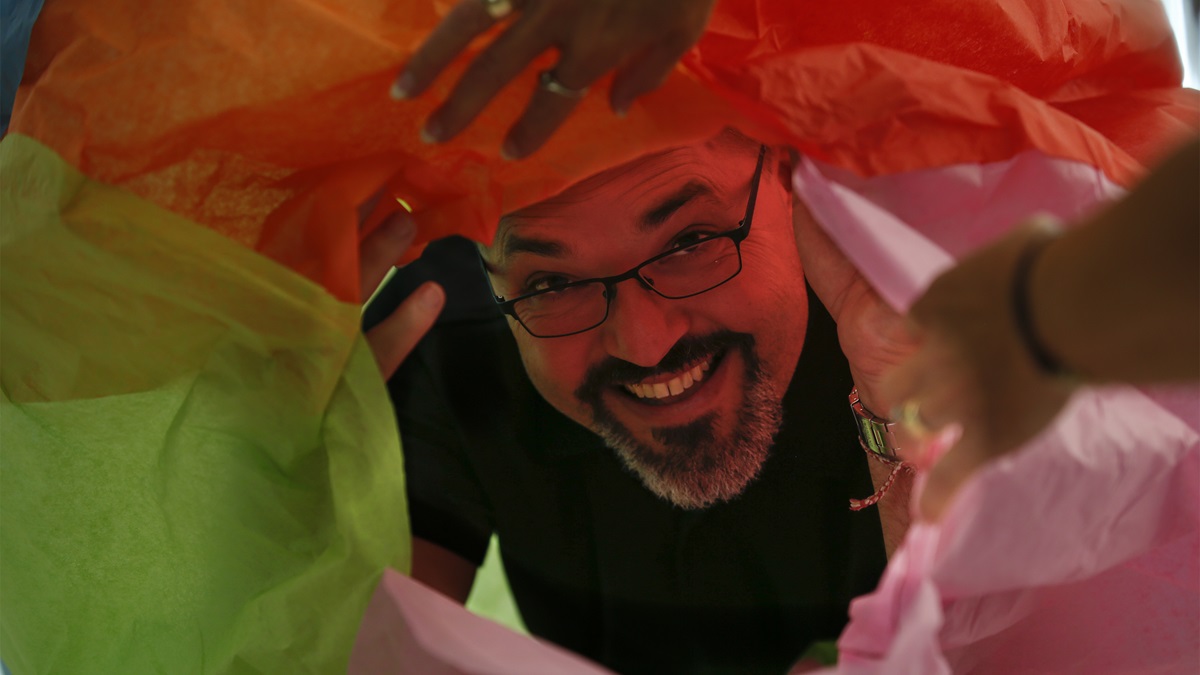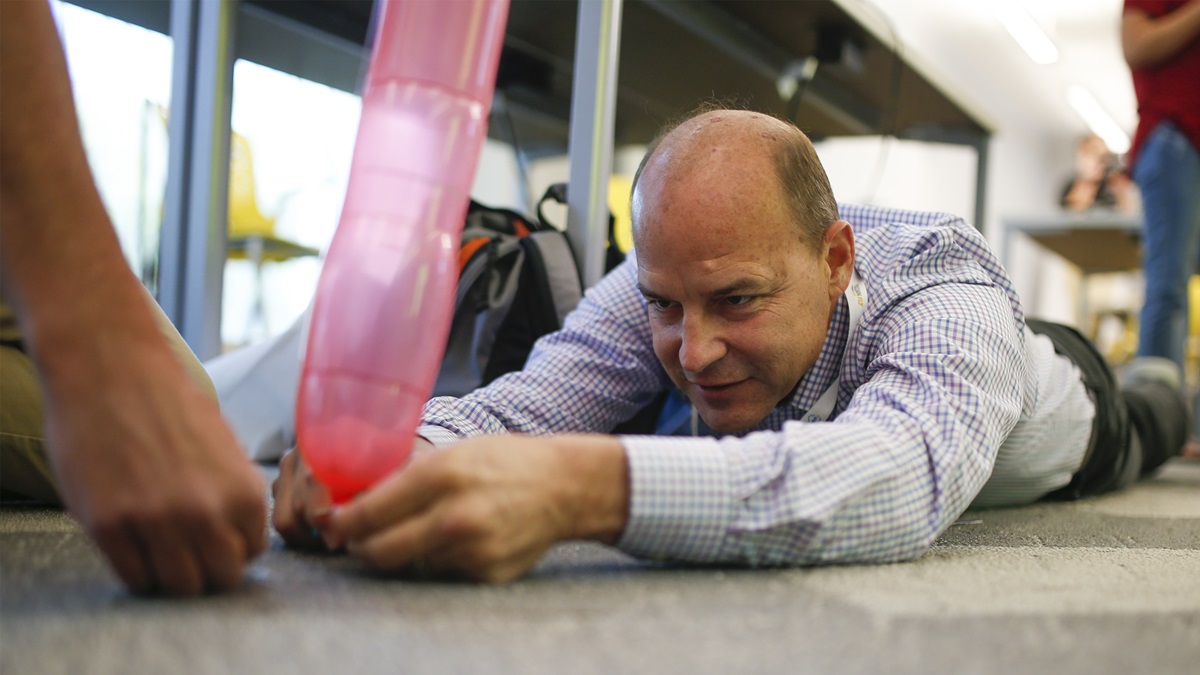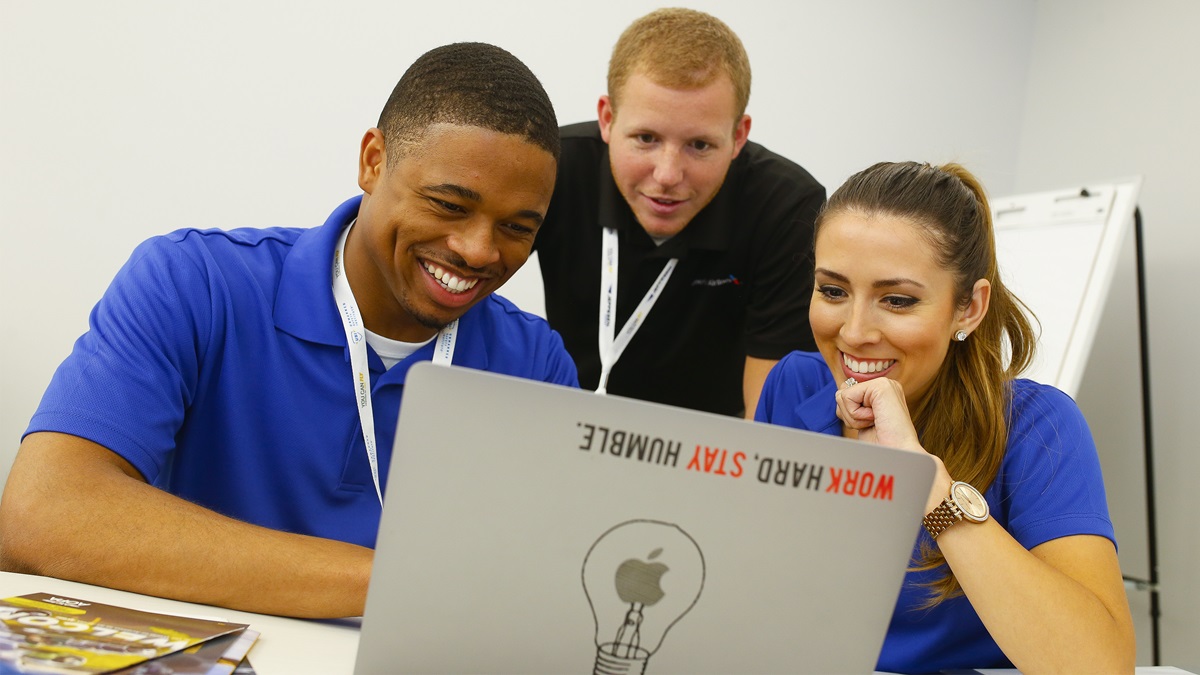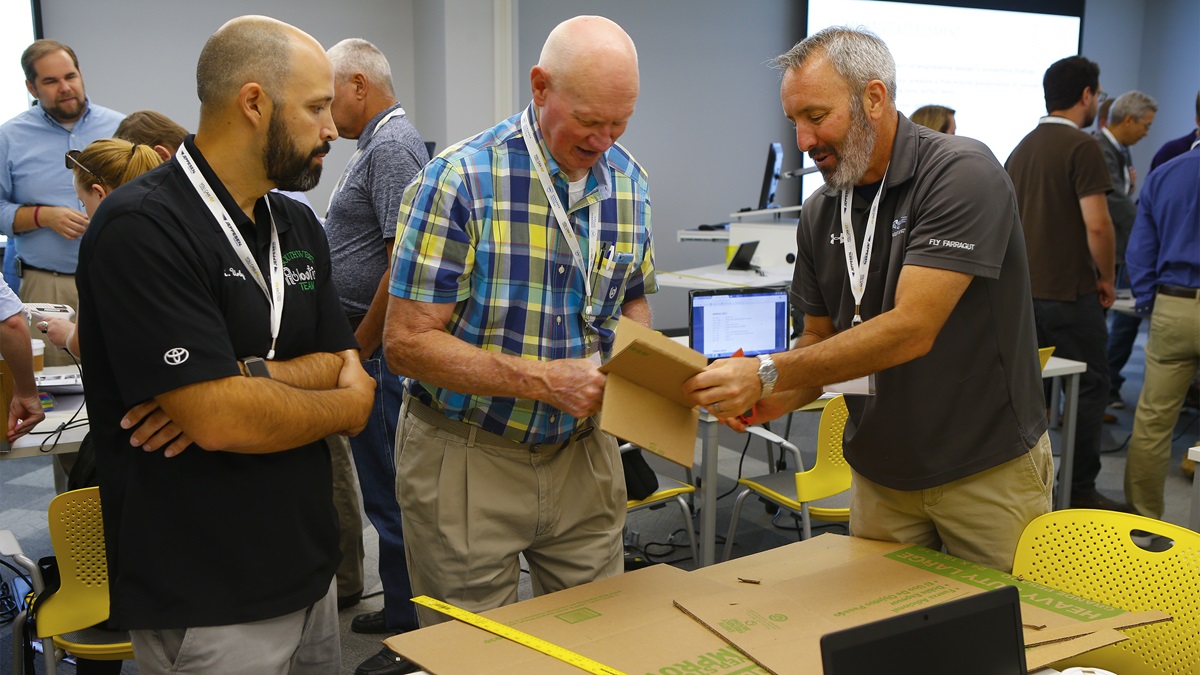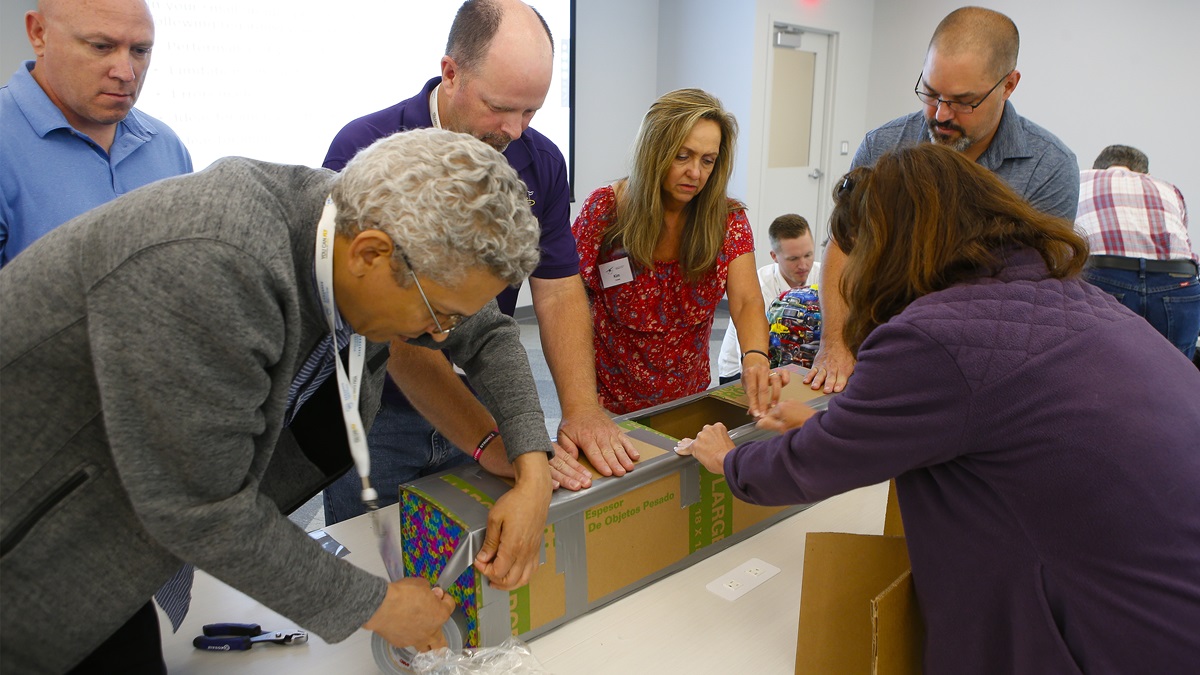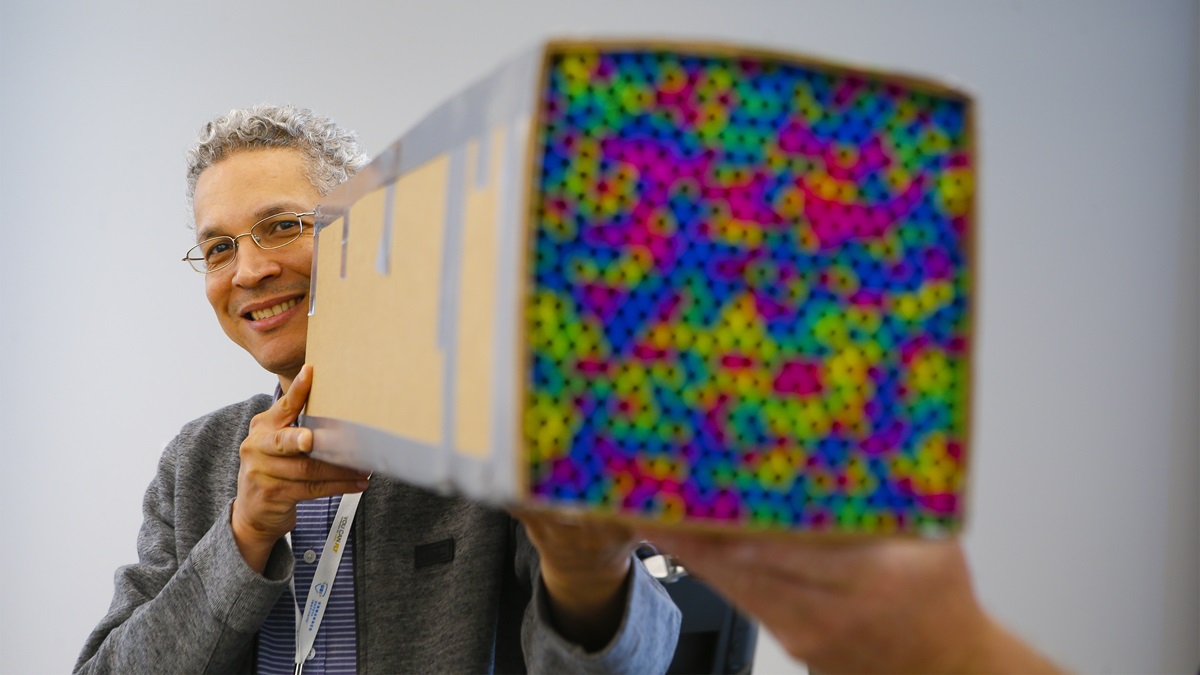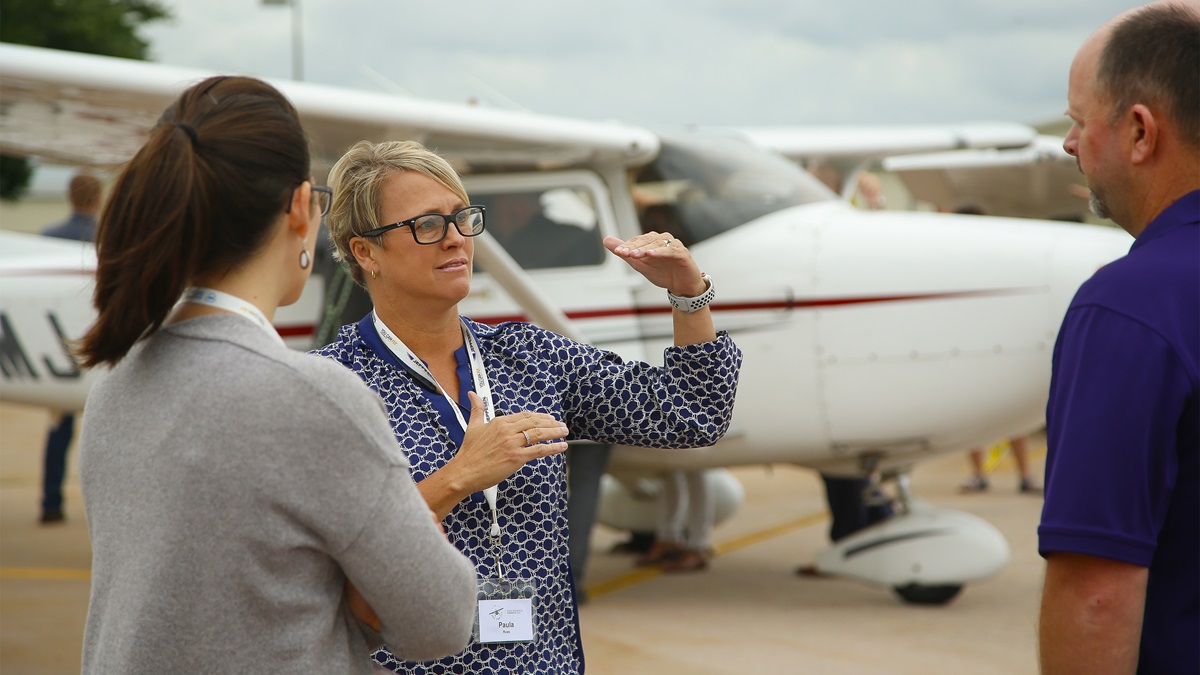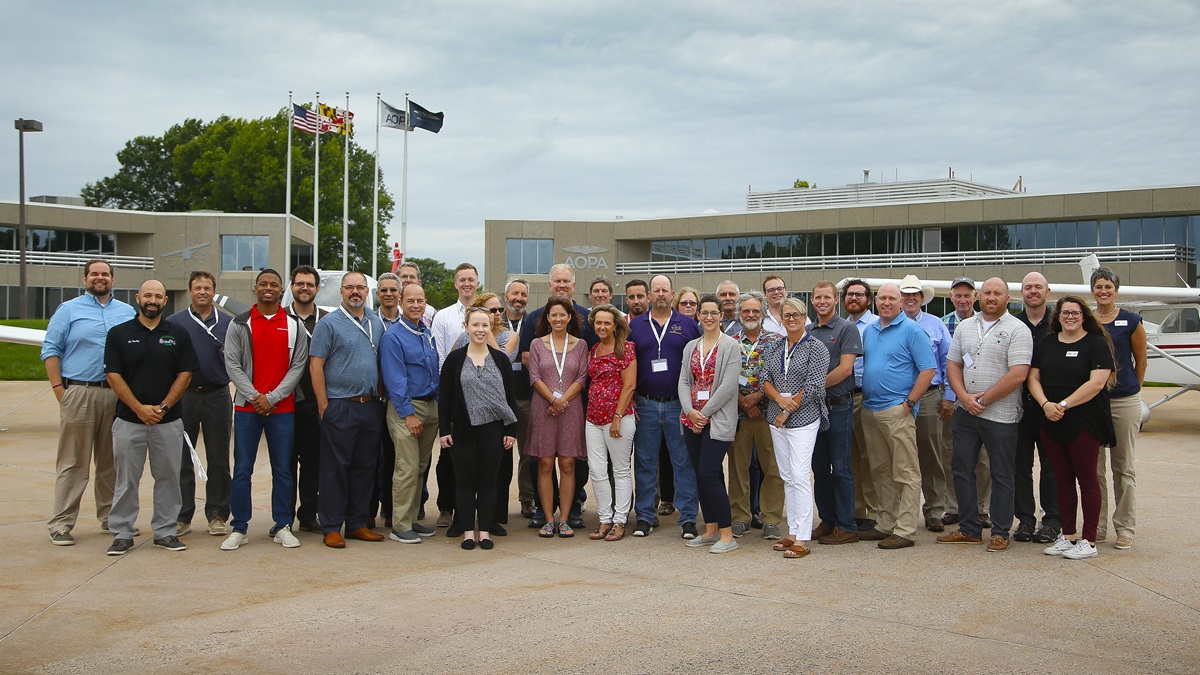Teachers descend, aviation ascends
AOPA hosts ninth grade curriculum workshop
They launched homemade balloons, designed their own wind tunnels, and set off rockets. More than 60 teachers from high schools across the country participated in the AOPA High School Aviation Curriculum Ninth Grade Workshop at the You Can Fly Academy in Frederick, Maryland. For three days these instructors learned and practiced the curriculum prepared by the You Can Fly team to expose students to aviation as part of their STEM programs.
"This is designed to expose teachers to all sides of aviation," said Cindy Hasselbring, senior director of the AOPA High School Aviation Initiative. "We tell them: You can focus on teaching; we’ve done the curriculum."
The three-day symposium at the You Can Fly Academy is designed to present the curriculum to teachers, but also to allow them to experience the lessons firsthand. In doing so, they could imagine putting the curriculum into practice in their own classrooms. After each exercise the teachers questioned the real-life application.
"My classroom is large, but not as large as this,” asked one participant. “How could I adapt it to my classroom?"
Educators to aviators
Most of the teachers have no aviation background—like most of their students—so the curriculum, and the preparation for teaching it, gets back to basics. For example, in the section “Introduction to Flight,” teachers will trace the origins of flight with their students. As one of the experiences to enhance that section, the curriculum includes an activity making hot air balloons. Remembering that teachers have limited budgets, the You Can Fly team prepared the lesson plan with rudimentary equipment the teachers can use. Tissue paper, masking tape, glue sticks, and duct tape were the makings of the balloon; a small camp stove and metal heating duct creates the heat. The competition was fierce as teachers created their balloons and then held them over the heating duct. Whose would tap the ceiling first? Cheers for the winners and a desire to go back to the drawing board were the result.
"It's important to teach the strategy," commented AOPA Senior Director of Flight Training Education Chris Moser. "There’s a great value in doing it before you teach it." Moser is a former teacher who now directs the Rusty Pilots program for You Can Fly.
The teachers also launched "rockets" made from plastic balloons, built airfoils and wind tunnels from cardboard boxes and box fans, and built balsa wood gliders.
"We were a pilot school last year," said Paula Ross of Ada, Oklahoma. "We loved it and the kids loved it."
Ross also said she had not realized the opportunities in aviation until seeing the program. "Especially for a place like Ada, to see the opportunities these kids could have is exciting."
Aviators to educators
Pilot and Mooney owner Jonas DeLeon is an educator in New York City at Gregorio Luperon High School, a science and math public school for Latin American children. A pilot since 1993, DeLeon knew the science of aviation could benefit his students but wanted to convince his school system. One of his graduates came back after college to tell him that the current high school program had not prepared him well for programming in robotics and engineering; DeLeon discovered the You Can Fly curriculum and not only convinced the school system to invest in it, but convinced several of his fellow educators to become pilots.
"Aviation is my passion," he said. “And I knew it is another entry point for our students to become excited about STEM programs. We will guide our students; we are excited to be riding this wave."
Gregorio Luperon High School will offer the You Can Fly curriculum this fall to 24 students, 12 male and 12 female. "Our goal is more females in engineering and math. We will exceed all expectations," he enthused.
Field tested
The You Can Fly curriculum was field tested in 29 schools last year, and approximately 75 schools are anticipated to participate beginning with the 2018-19 school year. The curriculum is free to any school; however, the cost to attend the workshop was $200 and included all needed materials. Several of the attendees said their school systems paid for the course and transportation and lodging through grants, others paid for the program on their own. Teachers could attend the workshop virtually and there was no charge to do so (about 30 of the participants took part remotely). Teachers came from Texas, Washington, Tennessee, Oklahoma, New Jersey, and Minnesota. They were physics teachers, academic instructors, and math teachers. In order to implement the curriculum in their schools, teachers must attend the workshop, in person or virtually.
American Airlines is partnering with AOPA in this initiative. Three members of its newly formed pilot career recruiting and development program attended the workshop. American gave a $100,000 grant to the program, which is being used predominantly to help with revisions to the curriculum. Finishing touches are still being made to the curriculum, especially with input from the participants of the workshop. "Teachers will have a ready-to-go completed program to start the year," said Hasselbring.
